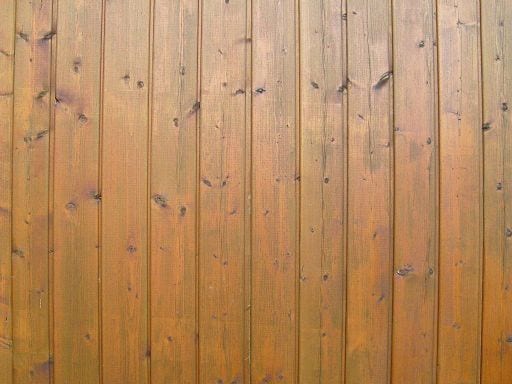Last Update: 3/28/21
According to research by the National Floor Safety Institute, a non-profit safety organization, each year over 8,000,000 Americans need emergency medical treatment and tens of thousands of people die every year from a slip and fall.
People of all ages are vulnerable to injuries from these accidents, such as broken wrists or hips, as well as painful soft tissue injuries. However, children and those over the age of 65 years share a higher risk of getting hurt if they should slip and fall. Furthermore, according to the Centers for Disease Control and Prevention, falls are the most common cause of traumatic brain injuries (TBIs).
From this research, there are several basic factors that contribute to most slip and fall accidents, the most common being the repair and maintenance of the floor surface.
Different Types of Wood Flooring
According to EHS Today, the leading US occupational safety and health magazine, the main reason for over half of slip and fall and trip and fall accidents in this country are issues related to the floor itself (the other major factors include the footwear the victim was wearing at the time of the accident as well as delays in cleaning up spills).
One type of flooring that is popular in Florida, which has specific maintenance requirements to help prevent slip and falls, is wood floors. However, all wood floors are not created equal. They can be made from a variety of materials including pine, oak, cherry, and even bamboo, and each type of flooring comes with its own set of guidelines as to the repair and maintenance of the material.
In addition to those materials, there are also engineered hardwoods, which is a product that has a real wood top layer placed atop several layers of assorted woods that are cross-layered or pressed together and glued. This construction process creates an extremely hard top surface, much harder than a standard hardwood floor, which can be an important factor in a slip and fall accident. This is especially true when it comes to evaluating the severity of a victim’s injuries.
Gloss Finished Wood Floors
Glossy wood floors are found throughout South Florida in both residential and commercial properties.
One of the key characteristics of this type of wood floor is its shine, and maintaining that glossy finish means constant polishing, buffing, and waxing.
With all that polish and wax, it is not uncommon for the floor to become slippery. For that reason, any responsible property owner should take extra precautions to protect their visitors and guests by properly maintaining these floors, which includes following the manufacturer’s suggested maintenance procedures.
Does Florida Law Require A Business Owner To Maintain Its Flooring?
Under Florida’s premises liability law, a business owner has a legal duty to make sure that those who walk upon their floors are safe from harm. For instance, a restaurant owner is responsible for making sure the establishment’s floors are safe for patrons by properly cleaning, in a timely manner, any foreign substances on its floors. Failing to do so can ultimately lead to the business owner having to compensate a slip and fall victim for damages such as pain and suffering, lost wages and other economic and non-economic damages.
How Do Insurance Companies Define Proper Care and Maintenance?
Most business owners have an insurance policy that covers slip and fall damage claims. The insurance companies that write these policies understand the proper care and maintenance of wood floors better than most because they spend money to research ways for their policyholders to minimize the risks of one of these events from occurring.
For example, The Hartford Financial Services Group provides the following advice on maintaining and repairing wood floor surfaces:
- Everyone with the task of taking care of these floors needs to have proper instruction and training on the special needs of wood floors.
- Anyone cleaning or waxing wood floors must follow the manufacturers’ directions relating to the products that should be used to clean and maintain these floors.
- Cleaning personnel need to know that specific types of floors require specific types of care. Wood is maintained differently than ceramic or tile or vinyl flooring.
Proper Maintenance Requirements For Wood Floors
The good news is that Florida’s negligence laws require that business owners familiarize themselves with the specific care and upkeep of wooden floors, in order to keep customers safe from dangerous conditions.
A business owner should know, for example, the standard process for maintaining wood floors is to sand the wood, seal it with the appropriate sealer, and then apply a combination cleaner-dressing that is solvent-resistant.
Also, according to WoodFloors.org the following advice should be followed for proper regular upkeep:
- Daily sweeping with a soft bristle broom or dusting with a dry microfiber mop.
- Weekly vacuuming on bare floor setting
- Monthly cleaning with a professional wood floor cleaning product as recommended by a wood flooring professional for the specific wood in the flooring.
Examples of Dangerous and Improper Wood Floor Care and Maintenance include:
- Not 100% stripping old wax before new wax is placed on the flooring
- Inadequate or incorrect cleaning
- Oil placed on wood floors not 100% wiped away
- Floor products applied too often (build up or warping)
- Waxing with the wrong equipment
- Too much wax being used on the flooring
- Improper wax being used for the type of wood
- Inadequate drying time
- Waxy residue left on the flooring
- Slippery soap left on the flooring
- Spills left on the flooring that are not immediately cleaned up
How Do You Make Wood Floors Safer?
The key for property owners with wood floors is to keep their beauty while making them less vulnerable to falls. For wood floors, that means being aware that waxing and polishing are the two big issues that cause wood floors to be so slippery.
For business owners, the answer to safer floors lies in creating some kind of resistance on the flooring surface, which can be done in several ways:
- Sanding the floors with a light sandpaper or even steel wool in the most dangerous walking paths.
- Create increased traction with a spray-on coating like the one sold by SlipDoctors.
- Applying a commercial non-skid product like Schutz’s SlipNoMor.
- Cover the floor surface with clear anti-slip safety tape.
- Covering the wood floor walkways with mats, rugs and throw carpets. These may have their own fall risks, and it is important to make sure the rugs are backed with anti-skid surfaces.
Read: Hurt in a Fall Because of No Floor Mat?
Have You Been Hurt Falling Down On A Wood Floor?
Sadly, slip and falls on wood floors happen every day and the victims can suffer serious bodily injuries. Some of these falls can even result in fatal accidents.
Just like with other premises liability claims, there may be more than one defendant who has a legal obligation to a slip and fall victim including landlords, cleaning services, repairmen and maintenance personnel.
A good piece of advice if you or a loved one has been injured in a wood floor slip and fall, is to speak with a personal injury lawyer who has spent years evaluating accident facts, applying the law, and effectively asking juries to render a favorable verdict. Most personal injury lawyers who meet these criteria, like Alan Sackrin, will offer a free initial consultation to answer your questions and explain the law.
You May Also Be Interested In: Attorney Fees Are Negotiable in Personal Injury Cases
_______________
 Do you have questions or comments? Then please feel free to send Alan an email or call him now at (954) 458-8655.
Do you have questions or comments? Then please feel free to send Alan an email or call him now at (954) 458-8655.
If you found this information helpful, please share this article and bookmark it for your future reference.

